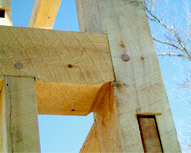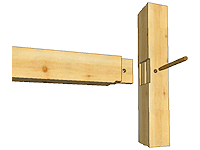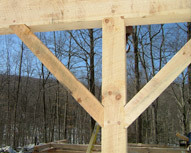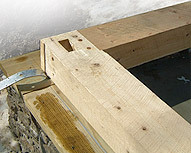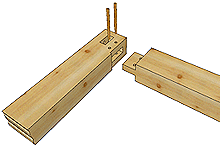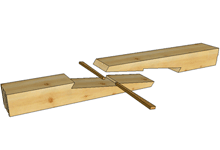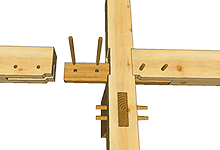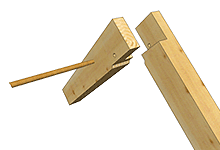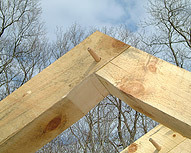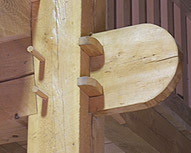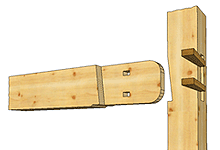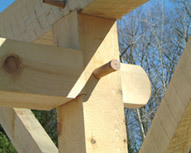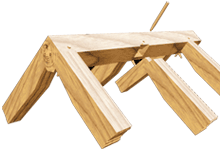Edited, memorised or added to reading queue
on 27-Mar-2016 (Sun)
Do you want BuboFlash to help you learning these things? Click here to log in or create user.
Flashcard 150901798
| status | not learned | measured difficulty | 37% [default] | last interval [days] | |||
|---|---|---|---|---|---|---|---|
| repetition number in this series | 0 | memorised on | scheduled repetition | ||||
| scheduled repetition interval | last repetition or drill |
Parent (intermediate) annotation
Open itThe factors held constant in Law of Demand relationship are the prices of other goods and the consumer's income
Original toplevel document
Law of demand - Wikipedia, the free encyclopediaof a product decreases (↓), quantity demanded increases (↑). In simple words,law of demand means inverse relationship between price and quantity of demand.There is a negative relationship between the quantity demanded of a good and its price. <span>The factors held constant in this relationship are the prices of other goods and the consumer's income. [1] There are, however, some possible exceptions to the law of demand (see Giffen goods and Veblen goods). Contents 1 Mathematical expression 2 Graphical depiction 3 Except
Flashcard 150901804
| status | not learned | measured difficulty | 37% [default] | last interval [days] | |||
|---|---|---|---|---|---|---|---|
| repetition number in this series | 0 | memorised on | scheduled repetition | ||||
| scheduled repetition interval | last repetition or drill |
Parent (intermediate) annotation
Open itThe factors held constant in Law of Demand relationship are the prices of other goods and the consumer's income
Original toplevel document
Law of demand - Wikipedia, the free encyclopediaof a product decreases (↓), quantity demanded increases (↑). In simple words,law of demand means inverse relationship between price and quantity of demand.There is a negative relationship between the quantity demanded of a good and its price. <span>The factors held constant in this relationship are the prices of other goods and the consumer's income. [1] There are, however, some possible exceptions to the law of demand (see Giffen goods and Veblen goods). Contents 1 Mathematical expression 2 Graphical depiction 3 Except
Flashcard 150901817
| status | not learned | measured difficulty | 37% [default] | last interval [days] | |||
|---|---|---|---|---|---|---|---|
| repetition number in this series | 0 | memorised on | scheduled repetition | ||||
| scheduled repetition interval | last repetition or drill |
Parent (intermediate) annotation
Open itinverse relationship of the Law of Demand may be expressed as a causal relation: where is the quantity demanded of good x, is the price of the good, is the demand function, and is its derivative. Here, is the <span>causal factor (independent variable) and Is the dependent variable <span><body><html>
Original toplevel document
Law of demand - Wikipedia, the free encyclopediaction 3 Exceptions to the law of demand 3.1 Giffen goods 3.2 Expectation of change in the price of commodity 3.3 Basic or necessary goods 4 The law of demand and change in demand 5 See also 6 References Mathematical expression[edit] <span>Mathematically, the inverse relationship may be expressed as a causal relation: where is the quantity demanded of good x, is the price of the good, is the demand function, and is its derivative. Here, is the causal factor (independent variable) and Is the dependent variable. Graphical depiction[edit] A demand curve is a graphical depiction that abides by the law of demand. It shows how the quantity demanded of some product during a specified period of
Flashcard 150901826
| status | not learned | measured difficulty | 37% [default] | last interval [days] | |||
|---|---|---|---|---|---|---|---|
| repetition number in this series | 0 | memorised on | scheduled repetition | ||||
| scheduled repetition interval | last repetition or drill |
Parent (intermediate) annotation
Open it/head>Mathematically, the inverse relationship of the Law of Demand may be expressed as a causal relation: where is the quantity demanded of good x, is the price of the good, is the demand function, and is its derivative. Here, is the causal factor (independent variable) and Is the dependent variable <html>
Original toplevel document
Law of demand - Wikipedia, the free encyclopediaction 3 Exceptions to the law of demand 3.1 Giffen goods 3.2 Expectation of change in the price of commodity 3.3 Basic or necessary goods 4 The law of demand and change in demand 5 See also 6 References Mathematical expression[edit] <span>Mathematically, the inverse relationship may be expressed as a causal relation: where is the quantity demanded of good x, is the price of the good, is the demand function, and is its derivative. Here, is the causal factor (independent variable) and Is the dependent variable. Graphical depiction[edit] A demand curve is a graphical depiction that abides by the law of demand. It shows how the quantity demanded of some product during a specified period of
Flashcard 150901845
| status | not learned | measured difficulty | 37% [default] | last interval [days] | |||
|---|---|---|---|---|---|---|---|
| repetition number in this series | 0 | memorised on | scheduled repetition | ||||
| scheduled repetition interval | last repetition or drill |
Parent (intermediate) annotation
Open itThe movement along a given demand curve due to a change in price is referred to as "change in quantity demanded". As the price changes, the quantity demanded changes. The term "change in demand" refers to a shift of the demand curve because of factors other than price.
Original toplevel document
Law of demand - Wikipedia, the free encyclopedian other words, as the price declines the quantity demanded increases. This is indicated by a downward movement along the demand curve. An increase in price decreases the quantity demanded, and an upward movement along the demand curve occurs. <span>The movement along a given demand curve due to a change in price is referred to as "change in quantity demanded". As the price changes, the quantity demanded changes. The term "change in demand" refers to a shift of the demand curve because of factors other than price. Exceptions to the law of demand[edit] Generally the amount demanded of a good increases with a decrease in price of the good and vice versa. In some cases, however, this may not be tru
| status | not read | reprioritisations | ||
|---|---|---|---|---|
| last reprioritisation on | suggested re-reading day | |||
| started reading on | finished reading on |
GRC | Vitamin D Research
what's in store. And once you get back down to the clinical studies details you'll have a much better sense for why you're there and why they probably matter.And thanks for checking this out! I hope you'll be glad you did. <span>“Vitamin D” is in quotes here and above because it is not a vitamin at all — in its active form it is the most powerful steroid hormone in our bodies. Though it is surprisingly crucial to both our developmental and ongoing health and well being (as the many clinical studies provided below demonstrate), it is present in it's so-called “active form” in concentrations of only 20 to 50 picograms per liter of human blood (a “picogram” is a trillionth of a gram!) So just a very tiny bit of this stuff goes a long way! When human skin is exposed to sufficiently powerful ultraviolet (UV) radiation from sunlight, a form of cholesterol co
| status | not read | reprioritisations | ||
|---|---|---|---|---|
| last reprioritisation on | suggested re-reading day | |||
| started reading on | finished reading on |
GRC | Vitamin D Research
er liter of human blood (a “picogram” is a trillionth of a gram!) So just a very tiny bit of this stuff goes a long way! When human skin is exposed to sufficiently powerful ultraviolet (UV) radiation from sunlight, a <span>form of cholesterol contained in our skin (“7-dehydrocholesterol”) is converted into the precursor of Vitamin D, called “cholecalciferol”. This is then converted by our liver into the inactive bulk storage form of vitamin D that blood tests measure (“25-hydroxyvitamin D”). Although Vitamin D is present in limited amounts in cod liver oil and some fatty fish (salmon, mackerel and tuna), it is essentially unavailable in metabolically useful quantities from d
| status | not read | reprioritisations | ||
|---|---|---|---|---|
| last reprioritisation on | suggested re-reading day | |||
| started reading on | finished reading on |
GRC | Vitamin D Research
olet light, converting it into harmless heat energy.) “Vitamin D” was misnamed when it was first discovered hundreds of years ago, before we knew where it came from or how it was made. By definition, it is not a “vitamin” because <span>vitamins are not produced endogenously (internally), they must be obtained exogenously (externally) from dietary food sources. It seems likely that part of the trouble “Vitamin D” has had with capturingthe attention it deserves is due to the fact that, simply by being misnamed a“vitamin”, it has b
| status | not read | reprioritisations | ||
|---|---|---|---|---|
| last reprioritisation on | suggested re-reading day | |||
| started reading on | finished reading on |
GRC | Vitamin D Research
and patented pharmaceuticals that allow older men to urinate more easily and less often, but we never see any similar advertisements mentioning that study after study has shown that simply (and inexpensively) maintaining sufficient levels of <span>Vitamin D can work to prevent rickets (that's well known) but also 17 types of cancer including pancreatic, colon/rectal, stomach, prostate, lung, breast, bladder, uterine, espousal, kidney, ovarian, multiple myeloma, non-hodgkin's lymphoma, and leukemia, lower blood pressure, improve immune system function (prevents colds and flu), autoimmune function, inflammation, multiple sclerosis, autism, allergies, preeclampsia, both type 1 and type 2 diabetes, osteoporosis (also well known) depression, muscle and bone weakness and generalized pain. Looking at that long list of problems above, you may wonder how something, anything, could possibly “cure” all of those very different disease conditions. But that's thinking about Vitam
| status | not read | reprioritisations | ||
|---|---|---|---|---|
| last reprioritisation on | suggested re-reading day | |||
| started reading on | finished reading on |
GRC | Vitamin D Research
amin D IS HIGHLY TOXIC when ingested inextremely high doses daily for many months !!! Our skin's natural sunlight-driven production of Vitamin D is internally regulated to limit the maximum rate at which Vitamin D can be produced. It has been <span>estimated that approximately 10,000 to 20,000 IU of Vitamin D is generated by 20 to 30 minutes of full body exposure in direct overhead sunlight. Beyond that, continued exposure begins to degrade any additional Vitamin D produced to limit its total daily production. It is, therefore, impossible to overdose on Vitamin D obtained
| status | not read | reprioritisations | ||
|---|---|---|---|---|
| last reprioritisation on | suggested re-reading day | |||
| started reading on | finished reading on |
GRC | Vitamin D Research
nline Medical Manual has the following to say: “Because synthesis of 1,25(OH)2D (the most active metabolite of vitamin D) is tightly regulated, vitamin D toxicity usually occurs only if excessive doses (prescription or megavitamin) are taken. <span>Vitamin D 1000ug (40,000 IU)/day produces toxicity within 1 to 4 months in infants. In adults, taking 1250 ug (50,000 IU)/day for several months can produce toxicity.” Purchasing Vitamin D SupplementsI have been using the web site “iHerb.com” for many years and I recommend them without hesitation. An advantage for me is that they are lo
| status | not read | reprioritisations | ||
|---|---|---|---|---|
| last reprioritisation on | suggested re-reading day | |||
| started reading on | finished reading on |
GRC | Vitamin D Research
my own use, and it's what I had been recommending to others. I have since switched to the Vitamin D from “Healthy Origins” (see below) because it is even less expensive than Now Foods and they are an equally good and trusted supplier.Because <span>Vitamin D3 (Cholecalciferol) is so potent and fat soluble, the capsules are tiny, filled with olive oil, and easy to swallow. The label instructs to take one 5,000 IU capsule every three days, for an average daily dosage of 5000/3 = 1667 IU/day. Since the 120 capsule bottle costs $8.80, taking one capsule every third day will last one full year, which is impossible to beat for the price.“Day skipping” works well with Vitamin D3, since after being quickly metabolized by your liver into “25-hydroxy vitamin D”, that fat soluble metabolite has a half-life of at least three weeks in the body. So whatever regimen you choose will quickly "average out" to a nice even level in your blood.Although you should never go “off label” to obtain a higher dosage without the advice of a doctor and/or keeping an eye on your important blood levels, especially calcium, this high-pote
| status | not read | reprioritisations | ||
|---|---|---|---|---|
| last reprioritisation on | suggested re-reading day | |||
| started reading on | finished reading on |
| status | not read | reprioritisations | ||
|---|---|---|---|---|
| last reprioritisation on | suggested re-reading day | |||
| started reading on | finished reading on |
New England Barn - Glossary of Joinery
Two Bay Barns New England Kingpost Barn Redding Workshop Barn Warren Gardener's Barn Authentic Joinery Throughout See Glossary A Glossary of Joinery <span>Girt To Post Joinery The most basic joint in timber framing is the Mortise & Tenon joint, illustrated here in the Girt (beam) to Post connection. Many other joints are simply variations on this joint. We house all of our mortise & tenon joints so that the beam and its loads are not resting solely on the tenon. This makes for a stronger and more appealing connection. Kneebrace Joinery The Knee Brace is a critical element of the timber frame. Providing rigidity to the frame through triangulation, these diagonal members are used wherever major bea
| status | not read | reprioritisations | ||
|---|---|---|---|---|
| last reprioritisation on | suggested re-reading day | |||
| started reading on | finished reading on |
New England Barn - Glossary of Joinery
t connection. Many other joints are simply variations on this joint. We house all of our mortise & tenon joints so that the beam and its loads are not resting solely on the tenon. This makes for a stronger and more appealing connection. <span>Kneebrace Joinery The Knee Brace is a critical element of the timber frame. Providing rigidity to the frame through triangulation, these diagonal members are used wherever major beams meet posts. Our authentically mortised knee brace joints are much stronger than half-lapped or nailed varieties. Timber Sill Joinery The foundations of early barns were often no more than large stones laid in minimally excavated trenches. These foundations would often move as seasonal freeze-th
| status | not read | reprioritisations | ||
|---|---|---|---|---|
| last reprioritisation on | suggested re-reading day | |||
| started reading on | finished reading on |
New England Barn - Glossary of Joinery
the timber frame. Providing rigidity to the frame through triangulation, these diagonal members are used wherever major beams meet posts. Our authentically mortised knee brace joints are much stronger than half-lapped or nailed varieties. <span>Timber Sill Joinery The foundations of early barns were often no more than large stones laid in minimally excavated trenches. These foundations would often move as seasonal freeze-thaw cycles took their toll. Large Timber Sills placed over these stones served to tie together the barn's Posts and keep the entire structure intact despite seasonal movements. For barns built today, we recommend using a modern concrete foundation (with footings below the frost line) but we still employ heavy Timber Sills under all of our barns for added strength, longevity and authenticity. We utilize a Mortise & Tenon joint at the corners to lock the sill timbers at right angles and a Mortise to receive a Tenon from the Corner Posts. As per modern building codes we also install pressure-treated 2x sills under the timbers. Stopped-Splayed Wedged Scarf Joinery As longer timbers became scarcer, early Americans developed various Scarf Joints to join two shorter timbers end to end to make one longer beam.
| status | not read | reprioritisations | ||
|---|---|---|---|---|
| last reprioritisation on | suggested re-reading day | |||
| started reading on | finished reading on |
New England Barn - Glossary of Joinery
We utilize a Mortise & Tenon joint at the corners to lock the sill timbers at right angles and a Mortise to receive a Tenon from the Corner Posts. As per modern building codes we also install pressure-treated 2x sills under the timbers. <span>Stopped-Splayed Wedged Scarf Joinery As longer timbers became scarcer, early Americans developed various Scarf Joints to join two shorter timbers end to end to make one longer beam. All of our larger barns (30' or longer) utilize the Stopped-Splayed Wedged Scarf to create continuous Top Plates and Purlin Plates. This interesting joint is a significant improvement on a simple half lap and is well designed to resist tensile, compressive and shear forces in the beam. Spline Joinery When two Girts (beams) are joined to a Post opposing each other at the same height, there is often not enough cross sectional width in the Post to allow for each Girt
| status | not read | reprioritisations | ||
|---|---|---|---|---|
| last reprioritisation on | suggested re-reading day | |||
| started reading on | finished reading on |
New England Barn - Glossary of Joinery
the Stopped-Splayed Wedged Scarf to create continuous Top Plates and Purlin Plates. This interesting joint is a significant improvement on a simple half lap and is well designed to resist tensile, compressive and shear forces in the beam. <span>Spline Joinery When two Girts (beams) are joined to a Post opposing each other at the same height, there is often not enough cross sectional width in the Post to allow for each Girt to have a Tenon of sufficient length. The solution is to employ a Spline Joint to make the connection solid and capable of resisting tensile forces within the beams. An oak Spline passes through a Through Mortise in the Post and is pegged through an Open Mortise in each Girt. Very Cool. Half-Lapped Rafter Peak This simple and sturdy joint was a very common way of joining together modest sized timber rafters eliminating the need for a Ridge Pole. The shoulder of eac
| status | not read | reprioritisations | ||
|---|---|---|---|---|
| last reprioritisation on | suggested re-reading day | |||
| started reading on | finished reading on |
New England Barn - Glossary of Joinery
ion is to employ a Spline Joint to make the connection solid and capable of resisting tensile forces within the beams. An oak Spline passes through a Through Mortise in the Post and is pegged through an Open Mortise in each Girt. Very Cool. <span>Half-Lapped Rafter Peak This simple and sturdy joint was a very common way of joining together modest sized timber rafters eliminating the need for a Ridge Pole. The shoulder of each Half-Lap is parallel to the roof angle of the mating rafter and thus the layout of the joint is dictated by the building's roof pitch. Mortise & Tenon Rafter Peak Larger timber rafters such as Principle Rafters are usually large enough in cross section to allow for the use of a Mortise & Tenon at their peak.
| status | not read | reprioritisations | ||
|---|---|---|---|---|
| last reprioritisation on | suggested re-reading day | |||
| started reading on | finished reading on |
New England Barn - Glossary of Joinery
joining together modest sized timber rafters eliminating the need for a Ridge Pole. The shoulder of each Half-Lap is parallel to the roof angle of the mating rafter and thus the layout of the joint is dictated by the building's roof pitch. <span>Mortise & Tenon Rafter Peak Larger timber rafters such as Principle Rafters are usually large enough in cross section to allow for the use of a Mortise & Tenon at their peak. When no Ridge Pole is used, this is the strongest way to lock these timbers together at the ridge. The joint's shoulder and tenon angles are dictated by the building's roof pitch. Wedged Anchorbeam Tenon The Dutch Anchorbeam Barn's large roof loads exert a powerful outward thrust on the Purlin Posts and massive Anchorbeam. This force is well resisted by the We
| status | not read | reprioritisations | ||
|---|---|---|---|---|
| last reprioritisation on | suggested re-reading day | |||
| started reading on | finished reading on |
New England Barn - Glossary of Joinery
to allow for the use of a Mortise & Tenon at their peak. When no Ridge Pole is used, this is the strongest way to lock these timbers together at the ridge. The joint's shoulder and tenon angles are dictated by the building's roof pitch. <span>Wedged Anchorbeam Tenon The Dutch Anchorbeam Barn's large roof loads exert a powerful outward thrust on the Purlin Posts and massive Anchorbeam. This force is well resisted by the Wedged Anchorbeam Joint, which features a Through Mortise and extended Tenon. The wedges draw the joint tight and are stronger than if the joint were only pegged. The end of the Tenon was often rounded to add embellishment. Queengirt Joinery Barns of larger width (over 24') often need structural Posts to pick up mid-span roof loads. In some of our barn designs, these members originate at the loft fl
| status | not read | reprioritisations | ||
|---|---|---|---|---|
| last reprioritisation on | suggested re-reading day | |||
| started reading on | finished reading on |
New England Barn - Glossary of Joinery
resisted by the Wedged Anchorbeam Joint, which features a Through Mortise and extended Tenon. The wedges draw the joint tight and are stronger than if the joint were only pegged. The end of the Tenon was often rounded to add embellishment. <span>Queengirt Joinery Barns of larger width (over 24') often need structural Posts to pick up mid-span roof loads. In some of our barn designs, these members originate at the loft floor level and they are called Queenposts while in other designs we use continuous Purlin Posts running from the Rafters down to the foundation. In either case, the thrust of the roof load wants to pull these Posts outward and we must find ways to resist those forces. One effective method is to install a Queengirt - a beam that ties a pair of Queenposts or Purlin Posts together and keeps them from spreading apart. The Queengirt's long Tenon is pegged at a Through Mortise. The extended Tenon length provides extra wood beyond the peg (called Relish) which resists the tensile forces within the beam. 5-Sided Ridgepole The earliest barns had no Ridge Pole and the rafters were simply joined as pairs at the ridge (see Half-Lapped Rafter Peak). The optional 5-Sided Ridge Pole adds s
| status | not read | reprioritisations | ||
|---|---|---|---|---|
| last reprioritisation on | suggested re-reading day | |||
| started reading on | finished reading on |
New England Barn - Glossary of Joinery
in Posts together and keeps them from spreading apart. The Queengirt's long Tenon is pegged at a Through Mortise. The extended Tenon length provides extra wood beyond the peg (called Relish) which resists the tensile forces within the beam. <span>5-Sided Ridgepole The earliest barns had no Ridge Pole and the rafters were simply joined as pairs at the ridge (see Half-Lapped Rafter Peak). The optional 5-Sided Ridge Pole adds strength and interest to the roof structure framing. We include this detail as a standard element in our New England Kingpost Barn. Go to top of page © Copyright 2016 by The New England Barn Company LLC. All rights reserved. Web

 is the quantity demanded of good x,
is the quantity demanded of good x,  is the price of the good,
is the price of the good,  is the
is the  is its
is its 
 Is the
Is the 
 is the quantity demanded of good x,
is the quantity demanded of good x,  is the price of the good,
is the price of the good,  is the
is the 
 is the causal factor (
is the causal factor ( Is the
Is the 